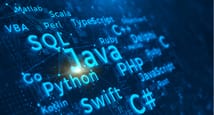- Course Introduction
- What is Systems Administration?
- Servers Revisited
- The Cloud
- Organizational Policies
- IT Infrastructure Services
- User and Hardware Provisioning
- Routine Maintenance
- Vendors
- Troubleshooting and Managing Issues
- In Case of Fire, Break Glass
- Dion: My Michelle Obama story
- With Great Power Comes Great Responsibility
- Never Test in Production
- Assessing Risk
- Fixing Things the Right Way
System Administration and IT Infrastructure Services
Delve into the unexplored yet instrumental aspects of background workplace activities with System Administration and IT ...Read more
Beginner
Online
Quick Facts
| particular | details | |||
|---|---|---|---|---|
|
Medium of instructions
English
|
Mode of learning
Self study
|
Mode of Delivery
Video and Text Based
|
Course overview
System Administration and IT Infrastructure Services course is the complete transitional package to train learners to work on many computers from just one. One of the premium learning of the course- Systems Administration is an important branch of Information Technology that deals with the maintenance of reliable systems of computers in a multi-user environment. This course enlightens candidates about infrastructure services devised for the smooth running of organisations across the world.
It lays a special focus on the Cloud System for a better understanding of the typical setup of cloud infrastructure for the management of cloud resources. Besides this, learners shall also be apprised of the configuration of servers and usage of industry tools for the administration of user productivity and information. Perhaps the most important aspect of this course is preparing candidates to cope with a corporate disaster by appropriate recovery strategy for their organization’s IT infrastructure.
This offering is a part of the IT Support Professional Certification Programme offered by Google Inc. under its initiative-Grow with Google. Learnings from this course will help the millennial workforce and students to access the best tools to enhance their career, business, and skills.
The highlights
- Self-paced learning format
- Approx. 30 hours of online learning
- Subtitles in seven languages
- Course offering by Google
- Crafted for beginners
Program offerings
- Videos
- Readings
- Exercises
- Graded quizzes
- Assignments
- Shareable certificate upon completion.
Course and certificate fees
System Administration and IT Infrastructure Services Fees Structure
Description | Amount in INR |
Fee for 1-month | Rs. 1,175 |
Fee for 3-month | Rs. 2,351 |
Fee for 6-month | Rs. 3,527 |
certificate availability
Yes
certificate providing authority
Coursera +1 more
Who it is for
System Administration and IT Infrastructure Services by Coursera is a beginner-level course crafted for individuals in the field of Informational Technology and seeking to gain insights on strategies that shall help in smooth conduction of daily activities of their organization. It is expected to benefit-
- IT professionals seeking knowledge regarding the management of cloud resources.
- System administrators at corporate organisations.
- IT infrastructure administrators to help them learn recovery of IT infrastructure in the event of a disaster.
Eligibility criteria
Certification Qualifying Details
Candidates need to complete the learning of the course and perform all the practice exercises. After grading of the same, they shall receive a Course Certificate from Coursera. However, only the candidates who pay for the certification after their seven-day trial ends shall get a certificate.
What you will learn
System Administration and IT Infrastructure Services course aims at sharpening the skills of candidates with respect to effective System Administration and equip them with tools and training involved in IT infrastructure services.
By the end of this course, candidates will be able to:
- Adopt the right hardware, services, and vendors for their organisation
- Manage infrastructure servers
- Supervise all the users and computers of their organization using Active Directory, OpenLDAP, and directory services.
- Choose the tools to be used by the organization for the administration of systems.
- Learn data backup.
- Utilise their knowledge to improvise and plan processes for IT environments.
The syllabus
Module 1: What is System Administration?
Videos
Readings
- Navigating Coursera
- How to Use Discussion Forums
- Get to Know Your Classmates
- Supplemental Reading on KVM switch
- Vendor Life-Cycle for Custom Services and Products
- Vendor Life-Cycle for Support of Commercial Products
- Change Managemen
- Recording Your Actions
- Module 1 Glossary
Quiz
- What is System Administration?
- Systems Administration Tasks
Module 2: Network and Infrastructure Services
Videos
- What are IT Infrastructure Services?
- The Role of IT Infrastructure Services in SysAdmin
- Types of IT Infrastructure Services
- Heather: My first job in tech
- Server Operating Systems
- Virtualization
- Remote Access Revisited
- FTP, SFTP, and TFTP
- NTP
- Network Support Services Revisited
- DNS
- DNS for Web Servers
- DNS for Internal Networks
- DHCP
- Unable to Resolve a Hostname or Domain Name
- What do Services Look Like in Action
- Managing Services in Linux
- Managing Services in Windows
- Configuring Services in Linux
- Configuring Services in Windows
- Configuring DNS with Dnsmasq
- Configuring DHCP with Dnsmasq
Readings
- Supplemental Reading for IT Infrastructure Services
- Supplemental Reading for Server Operating Systems
- Remote Connections
- Supplemental Reading for Remote Access and SSH
- Supplemental Reading for FTP Clients
- Supplemental Reading for BIND/PowerDNS
- Supplemental Reading for DNS and DHCP
- Qwiklabs Introduction
- dnsmasq
- Module 2 Glossary
Quiz
- Intro to IT Infrastructure Services
- Physical Infrastructure Services
- Network Services
- Network Services
- Qwiklabs: Service Management in Linux
- Qwiklabs: Service Management in Windows
- Qwiklabs: Getting familiar with DNS and DHCP
Module 3: Software and Platform Services
Videos
- Module Introduction
- Communication Services
- Email Protocols
- User Productivity Services: Agreements and Licenses
- Web Server Security Protocols
- Heather: Managing self-doubt
- What are file services?
- Network File Storage
- Mobile Synchronization
- Configuring Print Services
- Web Servers Revisited
- What is a database server?
- Is the website down?
- Cloud Concepts
- Typical Cloud Infrastructure Setups
- When and How to Choose Cloud
Readings
- Supplemental Reading for Chat Communication Services
- Supplemental Reading for Email Protocols
- Spam Management/Mitigation
- Supplemental Reading for File Services
- Supplemental Reading for Network File Storage
- Mobile Synchronization
- Supplemental Readings for Mobile Synchronization
- Print Services
- Supplemental Reading for Print Services
- Supplemental Reading for Web Servers (Revisited)
- Load Balancers
- Supplemental Reading for Database Admin Jobs
- Supplemental Reading for Troubleshooting with Developer Tools
- Common Cloud Models
- Managing Cloud Resources
- Module 3 Glossary
Quiz
- Software Services
- File, Print, and Platform Services
- Troubleshooting Platform Services
- Qwiklabs: Managing websites with Apache2
- Software and Platform Services
Module 4: Directory Services
Videos
- Module Introduction
- What is a directory server?
- Implementing Directory Services
- What is centralized management?
- What is LDAP?
- What is LDAP Authentication?
- Heather: Overcoming obstacles
- What is Active Directory?
- Managing Active Directory
- Managing Active Directory Users and Groups
- User Accounts and Groups
- Managing Active Directory User Passwords
- Joining an Active Directory Domain
- Group Policy: Group Policy Object (GPO)
- Group Policy Creation and Editing
- Group Policy Inheritance and Precedence
- Group Policy Troubleshooting
- Group Policy Troubleshooting: Common Issues
- Mobile Device Management (MDM)
- What is OpenLDAP?
- Managing OpenLDAP
Readings
- Supplemental Reading for Centralized Management
- Supplemental Reading for LDAP
- Supplemental Reading for Kerberos
- Supplemental Reading for Active Directory
- Supplemental Reading for Group Security Principles
- Supplemental Reading for EFS Features
- Supplemental Reading for DFL & FFL
- Supplemental Reading for Group Policy Troubleshooting
- Supplement Reading for Group Policy Troubleshooting Examples
- Supplemental Readings for Mobile Device Management (MDM)
- Supplemental Reading for OpenLDAP
- Supplemental Reading for Managing OpenLDAP
- Module 4 Glossary
Quiz
- Introduction to Directory Services
- Qwiklabs: Using Active Directory
- Centralized Management and LDAP
- Active Directory
- Directory Services
Module 5: Data Recovery & Backups
Videos
- Module Introduction
- What is Data Recovery?
- Backing Up Your Data
- Backup Solutions
- Job transition
- Testing Backups
- Types of Backup
- User Backups
- What's a Disaster Recovery Plan?
- Designing a Disaster Recovery Plan
- What's a post-mortem?
- Writing a Post-Mortem
- Interview Role Play: Sys Admin
Readings
- Supplemental Reading for GitLabs Data Recovery
- Supplemental Reading for Backup Solutions
- Supplemental Reading for RAID Levels
- Module 5 Glossary
Quiz
- Planning for Data Recovery
- Disaster Recovery Plans
- Post-Mortems
- Data Recovery & Backups
Module 6: Final Project
Videos
- Final Project Introduction
- Alex: How passion turned into success
- Congratulations!
Reading
- Course 4 Glossary
Reading
- System Administration Consultation
Admission details
The admission process is three-fold but there is no registration form required to be filled. Students just need to navigate through the course page.
To make their registration for System Administration and IT Infrastructure Services course, applicants must follow the given steps-
Step 1: Firstly, applicants must visit the course page and select "Enroll for Free."
Step 2: If the candidate has an account on Coursera, he/she will have to Log In. Else, he/she will have to Sign Up and create an account. Candidates can also log in via Google or Facebook.
Step 3: After successfully logging in, three options will be available to them-
- They can purchase the entire five-course series offered by Google.
- They can purchase Coursera Plus to get access to other courses as well.
- They can opt for the present course.
All the options come in with a seven-day trial.
Step 4: For enrolling in the present course, learners should click on “Audit the Single Course” at the top right of the webpage.
Step 5: They will get instant and free access to the course for seven days from the date of enrollment. All the course material shall be provided to them.
Scholarship Details
Coursera offers financial aid to all the learners of System Administration and IT Infrastructure Services. In order to fall eligible for the same, course takers need to place an application at least fifteen days beforehand.
Applicants have to enter the following details-
- Reasons for requesting financial aid
- Educational Background
- Employment status
- Annual Income
- Short note on ways by which they would invest their learnings in their career
- The minimum amount that can be afforded
The application form comprises a declaration dialogue box wherein the candidate expresses his/her confirmation to complete the entire course and that all information entered by them is accurate.
How it helps
This programme is backed by the expert training and tools of instructors from Google who have created the curriculum keeping in mind the present and future workforce in order to build strong organisations. This course would give ample opportunities to students to hone their skills and career ahead. It deals with all the real-world issues which a system administrator or IT professional would encounter in their day to day schedule at their workplace, and thus, equips them with essential strategies to cope with it.
Practice exercises and elaborate discussions on procedures and policies help in developing a great culture for system administrators. Most importantly, it teaches about disaster recovery plans which is a highly practical and lesser-known topic. Information about hardware is highly relevant to the business aspect.
Pursuing this course will spike up the job capacity of learners by providing a comprehensive study plan. Assignments not only focus on recommending strategies but also their need. The labs in the course have proven to help course takers with practicalities like configuring a web server and scheduling backups which can be managed on one device for the other.
FAQs
What are the requirements for running Coursera on a computer?
Candidates can use the following browsers along with a minimum of 1GB of RAM and a strong and reliable internet connection-
- Google Chrome
- Internet Explorer 11
- Safari
- Firefox
- Microsoft Edge
Is there any refund policy for the course subscription?
Refunds can be requested for an individual course within two weeks of payment. It cannot be granted after getting the Course Certificate or after two weeks.
Till how long can candidates avail financial aid?
Financial Aid is valid for 180 days from the approval. Candidates who fail to earn a certificate within this period will have to apply again or pay for the course.
What can be done if a candidate wishes to change his name on the certificate?
The candidate must be logged in after which he must go to "Account Settings" and click on "Request a name change." Capitalization of the name cannot be changed.
If a candidate cancels his free trial, would he still be able to access the course?
Yes, a candidate will have access to the specialization for all 7 days of the free trial even after cancellation. After that, the course material will not be visible.
Articles
Popular Articles
Latest Articles
Similar Courses


Information Technology Fundamentals for Business P...
Polytechnic University of Valencia, Valencia via Edx


Information Technology Fundamentals for Business P...
Polytechnic University of Valencia, Valencia via Edx


Being a Researcher in Information Science and Tech...
Polytechnic University of Milan, Milan via Coursera


Introduction to Enterprise Computing
IBM via Coursera


Digital Thread Implementation
University at Buffalo, Buffalo via Coursera


Customer Centric IT Strategy
UVA Charlottesville via Coursera


Information Technology Infrastructure and Emerging...
University of Minnesota, Minneapolis via Coursera


Mastering Web3 with Waves
E-Learning Development Fund via Coursera
Courses of your Interest

C++ Foundation
PW Skills

Advanced CFD Meshing using ANSA
Skill Lync

Data Science Foundations to Core Bootcamp
Springboard

User Experience Design And Research
UM–Ann Arbor via Futurelearn

Fundamentals of Agile Project Management
UCI Irvine via Futurelearn

Artificial intelligence Design and Engineering wit...
CloudSwyft Global Systems, Inc via Futurelearn
More Courses by Google

Fundamentals Training

Google Artificial Intelligence for JavaScript Deve...
Google via Edx

Coronavirus Powersearching
Google via Edx

Building No Code Apps with App Sheet Foundations
Google via Coursera

Introduction to Cloud Identity
Google via Coursera

CBRS Professional Training
Google via Coursera

Contact Center Artificial Intelligence Conversatio...
Google via Coursera

Understanding Your Google Cloud Costs
Google via Coursera

Developing a Google SRE Culture
Google via Coursera

Deploying SAP on Google Cloud
Google via Coursera


 Brochure
Brochure Enquire
Enquire













